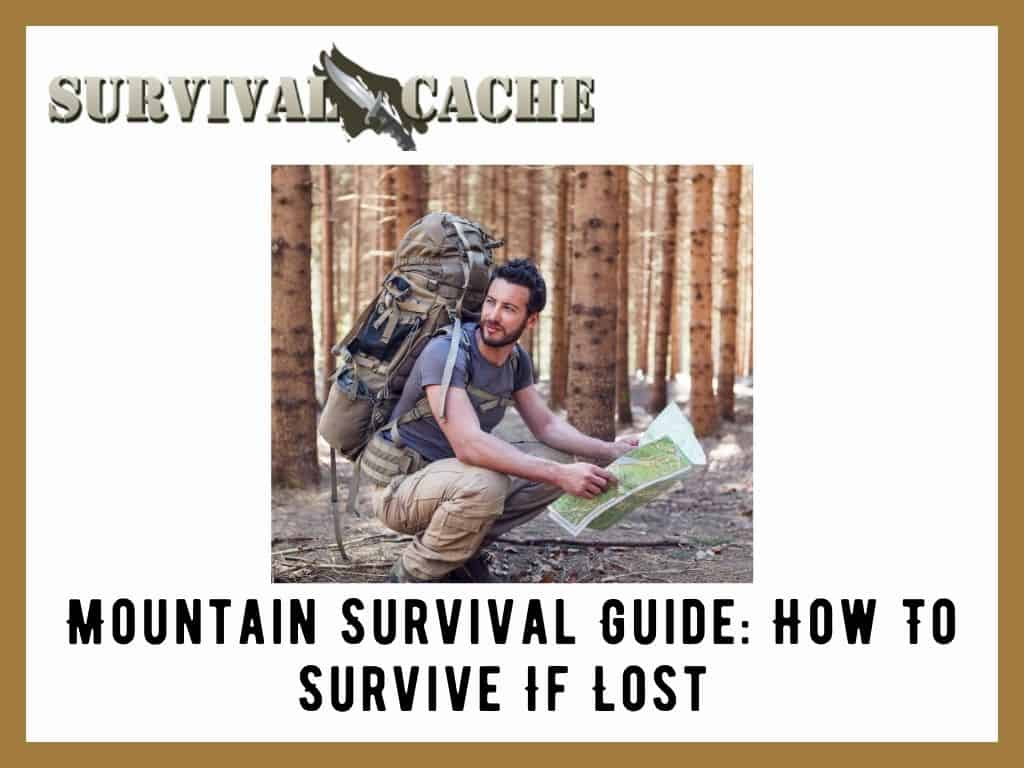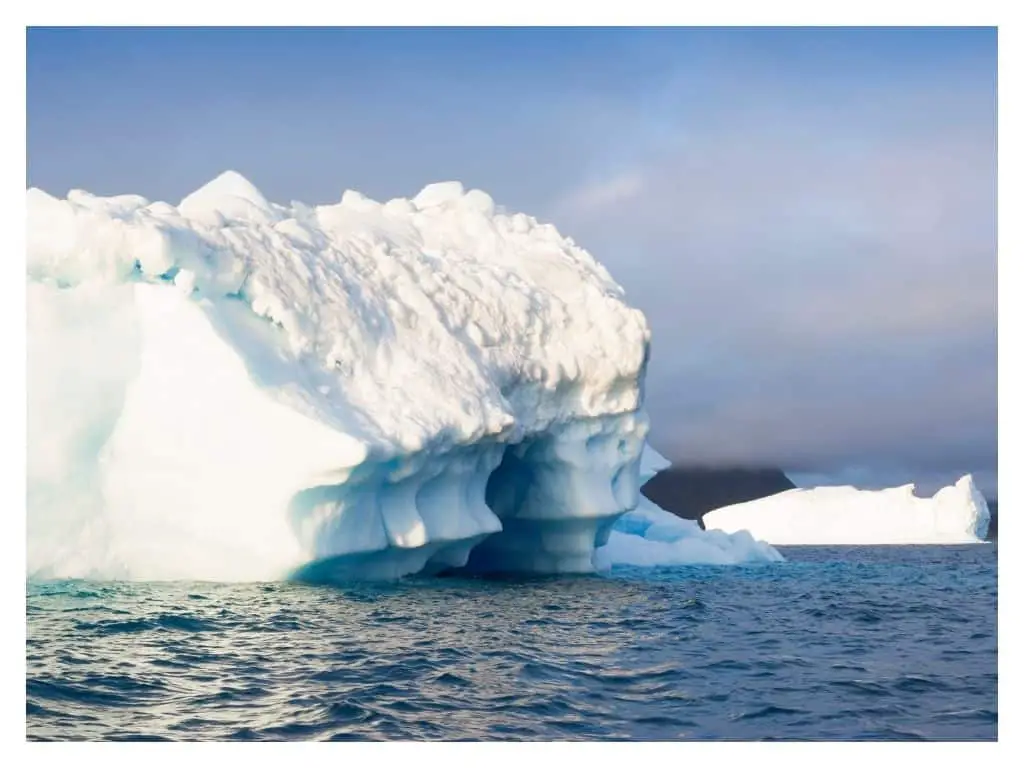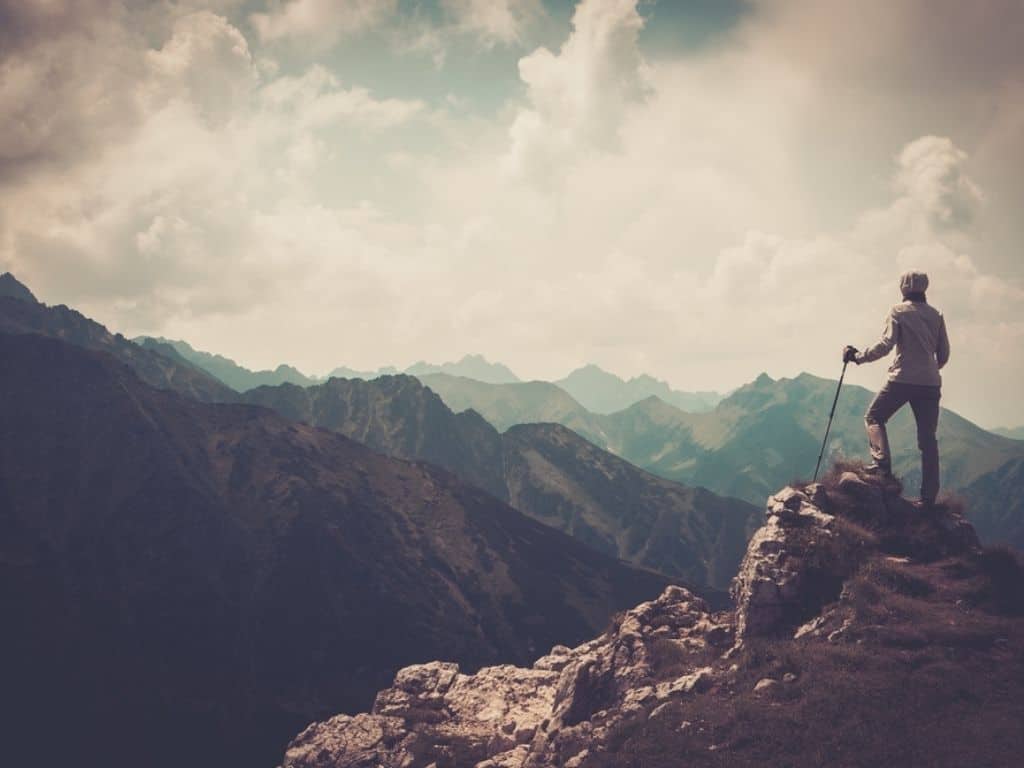For whatever reason, you may find yourself surviving in a mountain environment.
Maybe you got lost or a vehicle broke down or tumbled from an embankment. No matter the cause, the cold and rocky terrain of a mountainside is an unforgiving place to be.

From freezing temperatures and icy conditions to altitude sickness and wildlife, you are going to need to be properly prepared in both knowledge and gear to survive everything mountains can throw at you.
SKIP AHEAD
Mountain Dangers
Avalanches and Falling Ice
Avalanches occur when an area of snow or ice breaks loose from the mountainside and begins traveling downhill.
Avalanches can have a tremendous amount of force, picking up rocks and breaking through trees on their decent.
Always look to the terrain around and above you. Avoid steep slopes above you as well as areas of snow that receive a lot of sunlight
There are different types of avalanches and it goes without saying you will want to avoid all of them at all costs.
Rockslides
Similar to avalanches, a rockslide happens when an area of rocks become loose and travel downhill.
Areas that are prone to these tend to leave a channel of rocks littered down the hillside.
If you have to move across such an area do so quickly and keep your head on a swivel.
Glaciers

These behemoth chunks of ice pose their own threats. Slippery conditions, zig-zagging routes of travel, and the ever present danger of crevices.
When traveling across these it is best to do so with a walking stick and to test each step before committing to it.
Wildlife
Mountainous regions can have a host of wildlife that includes bears, wolves, big cats, and antlered animals.
Most large predators typically are not interested in people but tend to react more out of fear or the protection of their offspring.
The general rule of thumb for dealing with predators like these is to create loud noises to avoid surprising them in the first place and to continue making noises in their presence.
Also, make yourself look larger by puffing out your chest and raising your arms in the air.
You should never turn your back to a predator or run as this can indicate prey status and invoke a more serious reaction.
Temperatures
Cold temperatures are given in a mountain range. Three hours without protecting core body temperature and a person can become hypothermic.
Keeping your body temperature up through proper clothing, fire, shelter, or exercising is a must.
Lack of Resources
The higher up a mountainside you go the fewer resources there tend to be.
It may be in your best interest to travel downhill if natural resources are difficult to come by.
Altitude Sickness
This occurs when an individual is subjected to lower levels of oxygen and air pressure at higher altitudes.
Often it is due to the body not being acclimated to the above conditions by ascending too quickly.
Altitude sickness can cause headaches, dizziness, upset stomachs, and shortness of breath.
Generally, these symptoms are mild but serious cases can lead to death which is why this condition should not be ignored.
The best remedy is to get to a lower altitude as quickly as possible without overexerting oneself.
Avoid The Edges
It goes without saying that you should stay away from rocky ledges that are high up.
But the same goes for snow-covered ledges and outcrops. They may look solid from above but they could be severely undercut below, making them incredibly unstable.
Mountain Survival Gear
Clothing
Wearing the proper clothing is extremely important in mountain regions due to cold temperatures. Exposure to extreme environments can lead to death quicker than not having enough water.
As many layers as possible should be worn. Clothing layers can always be taken off later to help regulate body temperature.
Leave cotton material behind because when it gets wet it loses its insulating capabilities, will lower body temperature, and becomes heavy.
Instead, swap out cotton for synthetics and wool. Wool is great because it insulates very well even when wet.
Proper footwear should be worn such as boots with a lot of traction and that will keep feet dry from snow and ice.
Thick and insulating hats, gloves, and facial coverings will also be required for keeping warm and preventing frostbite on extremities.
Gear
Walking Stick. These can be bought at stores, custom shops or they can be simply picked up from nature.

A walking stick has a lot of benefits but a few of them are:
- Helping to keep your balance
- Tests the depth and solidity of snow and ice
- Can be used as a crutch when injured
- A weapon
- A fishing pole
- A digging tool
Sunglasses or Goggles. Other than protecting your eyes from physical objects like tree branches, blowing snow, and random debris, sunglasses will help to reduce the risk of snow blindness.
This is a condition that occurs when exposed to prolonged periods of looking at the Sun that is reflecting off the snow.
Camp Stove. Due to the chances of low resources and cold temperatures, it is best to carry a small camp stove with a fuel canister.
This will allow for a fire to be started immediately without the worry of searching for natural fuel.
Metal Water Container. Swap out the plastic containers for a metal one so that snow can be melted, boiled, and used for drinking water.
Not only is boiling water needed to help purify it, but the heated water will help to keep you warm.
Food. Food becomes more important in mountainous regions. This is because the body is working much harder to deal with difficult terrain and to stay warm.
A supply of emergency food such as freeze-dried meals should be packed.
Having supplies like a fishing kit, bow, firearm, snares, and knowledge of wild edibles will also help maintain caloric intake.
Fire. A robust fire kit is always a necessity but in freezing conditions it becomes even more critical.
Items to have include a butane lighter, stormproof matches, ferrocerium and magnesium rods, and plenty of tinder.
First Aid. Every kit needs first aid supplies and what goes in it is a personal choice. However, one recommendation would be to have some wraps or joint braces.
Rocky, uneven terrain is often referred to as “ankle busters” because of the increased chances for twisting an ankle.
Knife. A sturdy outdoor knife is always essential. In a cold environment, a slightly larger knife of five to six inches may be easier to handle when wearing gloves.
Chopping Tool. A hatchet, tomahawk, or ax will be very useful in cold conditions when timber resources are available.
An ice ax is another option but in the hands of someone unfamiliar with them, they may just add more weight.
Folding Shovel. This small, lightweight tool has a lot of different uses, especially in snowy regions.
Shelter. Wool blankets, emergency blankets, bivvies, sleeping bags, and tents that are rated for cold weather need to be in a mountain survival kit.
Maintaining core body temperature is of the utmost importance when dealing with extreme temperatures that can bring survival time down to hours.
Flashlight. Headlamps are a great choice because they can be operated hands-free.
Extra Clothing. Being wet in cold conditions is uncomfortable but more importantly, it is dangerous.
Always have an extra set of dry clothes and socks that can be changed into should you become wet.
Cordage. Can be used to make shelter, fish, hunt, and many other uses.
This can include climbing gear and ropes but only for those that are professionally trained and experienced.
Crampons and Ice Axe
These two tools are specifically made for mountainous conditions.
Crampons are a device with spikey protrusions that are secured to boots or shoes that help with gaining traction in snowy and icy terrain.
An ice ax is not going to be used for chopping wood but has many uses in the snow and ice. It can be used as a small walking stick, helps in clearing snow and ice for footholds, aids in ascending and descending steep inclines, and can be used as a ground anchor.
Quick Mountain Survival Tips
- Typically, more resources will be found at lower elevations
- Avoid walking on steep inclines, especially ones that are wet, slippery, or have loose soil and rocks
- Descend the mountain as quickly and as safely as possible when experiencing symptoms of altitude sickness
- Temperature is dependent on several factors but a rule of thumb is that the temperature will drop several degrees for every one thousand feet gained in elevation
- Before taking a step into the snow of unknown depth or icy terrain always test out footing with a walking stick before each step
- Avoid walking too close to edges and snowy overhangs
- When snow is deep enough, it can be dug out from around a tree trunk and the tree and top level of snow can easily be used for a shelter
- Always have an insulating barrier between you and the snow/ground when sitting, resting, and sleeping
- When making a fire on top of snow place a barrier between the fire and snow
- Don’t become wet with sweat! During physical activity, if you feel yourself beginning to warm up and on the verge of sweating, stop and rest or remove clothing layers to cool down.
Wrap Up
No matter the circumstances that result in ending up stranded on mountainous terrain, it is one tough environment that will test every fiber of one’s physical and mental fortitude.
Never underestimate mother nature. Even if a plan calls for simply and “quickly” traveling through a mountain region using a vehicle it is always best practice to have the proper gear and supplies available.
As the old saying goes, “It is better to have something and not need it than to need it and not have it.”
Thanks for reading and as always, stay prepared!
What are your thoughts on survival gear and skills in mountainous regions? Sound off in the comment section below and let us know!

